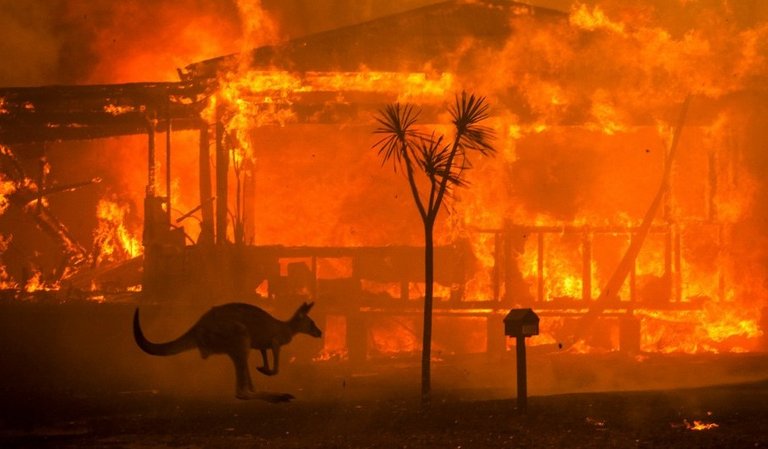
The Charnel House

Poetic Inspiration
This tanka was inspired by our continuing overheating planet, the increasing frequency of bushfires in many places and how this affects wildlife.
The title image for this post is intensely emotive for me as I honestly believe that we as humans have no more right to this earth than any other form of life with which we share the planet.
Our wholesale destruction of the environment is nothing short of moronic, and without drastic change, both economically, socially and in how we govern ourselves, it isn't going to stop.
What is a Tanka poem?
Tanka poetry is a Japanese 31-syllable poem, traditionally written as a single, unbroken line. In English translations, the Tanka tends to take on a five-line form and midway through a Tanka poem, there's a change in perception, similar to a sonnet. There's usually a "turn" between lines two and three. As with a sonnet, this expresses a transition from an image to a reflection upon the image.
The word "Tanka" translates to "short song." Just like haiku poetry, Tanka poems have specific syllable requirements - but unlike haiku, the focus isn't on crafting a single perfect moment. Tanka can use many literary devices, including personification, metaphors, and similes to express complex imagery.
Tanka follow the form 5/7/5/7/7 syllables/line with a 5 line structure when written in English. However, as I have mentioned previously in my post Haiku Vs Senryu - The Aesthetics of Form, the syllabic convention is only set in stone when written in the native Japanese. While it is great to stick to the convention when writing in English, you should never get stuck on counting syllables to the detriment of the poem's overall aesthetic feel.
For example; when Saitō Mokichi's tanka is translated to English it does not fit the conventions. The poem counts as 5/5/5/6/7 syllables - three syllables are lost in translation. But the poem is still a perfect example of the form from a traditional Japanese master because the aesthetic isn't lost in translation!
Coming to a wall,
a lacewing Mayfly
is clinging to it --
the sheer transparency
Of the wings, their mournfulness.
Tanka by Saitō Mokichi
My Tanka honors the Ekphrastic form of poetry model, where a picture is used to prompt a poem. In this case I have taken my prompt from the image used as a thumbnail in this post.





Greetings
I have learned a lot about Tanka poetry reading your article.
My interest to Japanese culture was limited to the manga artistic production and video game, but I discover a new aspect on the literacy side.
Tanka as tool to compose a song is going to be so special on his form and the way it hits the audience.
Regards
#freecompliments